The Soul of the Indian
Eastman, Charles Alexander (1911)
1858-1939
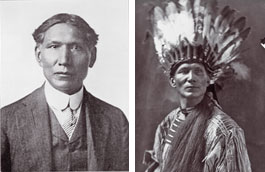
| Charles A.
Eastman, Ohiyesa (Winner), Wahpeton Dakota (Eastern Woodland Sioux),
1858-1939. Physician, autobiographer, legend re-teller, essayist,
lecturer. |
Charles Alexander Eastman is
unique among Indian writers, whether storytellers or oral historians. He was
raised traditionally, as a Woodland Sioux, by his grandmother, from 1858 -
1874, until he was 15. He thereby gained a thorough first-hand knowledge of
the lifeways, language, culture, and oral history. His father whom his
family had thought was hanged at Mankato, Minnesota, (where I later attended
college.) reappeared after 12 years in prison in Iowa and insisted that
Charles receive the white man's education. Educated at Dartmouth and
Boston University medical school, Eastman became a highly literate
physician, who was the only doctor available to the victims of the Wounded
Knee massacre in 1890 -- a major historical event, often described as
"ending the Indian wars". Other Indian writers of this period were either
entirely acculturated -- had never lived the traditional life of their
people or been educated out of their native knowledge -- or were not
literate, and were able to provide only second-person materials, through the
filters of interpreters and non-Indian writers. Eastman had the lifeways and
historical events experiences and he did not need the literary filters of
translators and white anthropologists or collectors.
Ohiyesa was first named Hakadah (the Pitiful Last
One), because his mother died shortly after his birth, somewhere near
Redwood Falls, in southwestern Minnesota, in 1858. His first volume of
memoirs -- depicting his traditional life, raised by his Wahpeton
grandmother -- does not make it clear that almost all this boyhood took
place in Manitoba, Canada, after the band had fled U.S. Army and
bounty-hunters, following the defeat of the Dakota uprising in Minnesota, in
1862.
 This
19th-century ink drawing by an unidentified Canadian artist shows Minnesota
Dakota refugees arriving in Canada. Uncheeda (Ohiyesa's grandmother) and
several of his siblings lived in Manitoba, with other Minnesota Dakota
refugees, from 1862 - 74 on the land of his uncle, Mysterious Medicine, who
had a farm in wooded country in Manitoba, Canada.
This
19th-century ink drawing by an unidentified Canadian artist shows Minnesota
Dakota refugees arriving in Canada. Uncheeda (Ohiyesa's grandmother) and
several of his siblings lived in Manitoba, with other Minnesota Dakota
refugees, from 1862 - 74 on the land of his uncle, Mysterious Medicine, who
had a farm in wooded country in Manitoba, Canada.
Thus most of the experiences Charles recounts of his
traditional boyhood, his religious upbringing, the tales he heard, the
ceremonies and festivals, actually occurred among the Minnesota Dakota
exiles in Canada. Ohiyesa spent 11 of the 15 years of his traditional life
in Canada, mostly in Manitoba.
Permanent land called "reserves" was mostly allocated by
the Canadian government to the Minnesota exiles further west in the Treaty 6
area Wahpeton District. Sioux Valley, Griswold, Manitoba, is also a Dakota
Reserve. In the U.S., the largest Dakota reservation is Sisseton-Wahpeton,
which straddles the North - South Dakota state line just west of the
Minnesota border. Many captive exiled Minnesota Dakota were also
force-marched to what became the Crow Creek reservation in central South
Dakota; others to the Santee reservation on the southern border of South
Dakota and into Nebraska. Small numbers of Dakota also live on the four very
small reservations strung across southern Minnesota (where I grew up in the
1940's and 1950's.)
Ohiyesa's father, Many Lightnings, was one of the warriors
captured and among the more than 300 sentenced to be hanged. The surviving
family did not realize he had been among the group pardoned (partially) by
President Lincoln, and imprisoned in Davenport, Iowa, for 12 years. When he
arrived at Mysterious Medicine's farm, he had converted to Christianity
during his years in federal prison. He took Ohiyesa with him, to settle near
Flandreau, North Dakota, where a number of Christianized Dakota had
homesteaded farms, and Ohiyesa was baptized, given the name Charles
Alexander Eastman, and entered the Flandreau Santee Normal Indian school,
run by the Presbyterian missionary Joseph Riggs.
Eastman won a college scholarship to Beloit preparatory
College (Wisconsin), but soon moved on to the more demanding Knox College
(helped by Riggs, a Knox alumnus). He wanted to find a way of earning a
living which would also benefit his people, settling on medicine as offering
"the best way to be of service to my race." He transferred to Dartmouth, and
had to make up about two years of academic work prior to enrolling in the
freshman Latin Scientific (pre-medicine) courses.
Premedical study required coursework in Latin, Greek,
German, French, zoology, botany, physics, chemistry, natural history,
natural philosophy, and a lot of math. Eastman still found time for sports.
Captain of the football team, he set an all-college record for long-distance
running, and also participated on the tennis, boxing, and baseball teams. He
met many prominent Boston intellectuals, among them Frank Wood (who was a
leading organizer attempting to reform the Indian Bureau). Wood helped him
get the financial support he needed to attend Boston University Medical
School.
Upon
graduation as an Medical Doctor, in June 1890, he was elected by his class
to deliver the graduation address. In his first job was as physician for the
Pine Ridge, South Dakota, Indian agency he met and fell in love with Elaine
Goodale, whose writings on Indian education had impressed him previously.
She was the newly-appointed supervisor of Indian education for North and
South Dakota. Goodale spoke excellent Lakota (a different dialect than the
Dakota that Eastman had nearly forgotten) and had quickly become close
friends with several Indian women.
The Ghost Dance, a religious attempt to reverse the
destruction of the Plains Indians, had come to be fervidly practiced in the
Dakotas. Though it stressed peace and non-violent dance, vision, and prayer,
it was banned by the government in November of 1890. One band, the
Minneconjou Lakota led by BigFoot, was on its way to the Pine Ridge agency
to surrender at the end of December, 1890. Eastman protested to his
supervisor Daniel Royer the sending of the 7th Cavalry to arrest and disarm
the band before it reached the agency.
The 7th Cavalry -- numbering 500 men, armed with early
versions of the machine gun -- carried out a brutal massacre in a dale known
as
Wounded Knee, hunting down fleeing
women and children where they had hidden in ravines. BigFoot's band had
consisted of a total of 350 people, about 230 of whom were women and
children. The brutal massacre left 150 dead and 44 badly injured. As a
blizzard blew up, the 7th Cavalry returned to the agency, bringing in about
a dozen wounded. They were left in wagons in the freezing blizzard while
Eastman and Goodale fought to have them allowed into the reservation church,
protected from the cold and treated.
Eastman and Elaine Goodale spent most of the night
treating these wounded. In the morning, they organized a rescue party, who
made the 18 mile trip to Wounded Knee on horseback through a driving
blizzard. They found heaps of grotesquely contorted, frozen dead, and others
strung out across the prairie for miles. "It took all my nerve to keep my
composure in the face of this spectacle, and of the excitement and grief of
my Indian companions, nearly every one of whom was crying aloud or singing
his death song," Eastman wrote later.
Astonishingly, there were a few survivors -- an old blind
woman, and a tiny baby. (Her sad history and exploited life is told in
Lost Bird of Wounded Knee.)
Eastman was in immediate conflict with his BIA superiors.
He was excpected to side with white policy on all matters, and after Wounded
Knee, could not do so. For example, he observed and protested corruption and
thievery of reparation monies ordered paid to "non-hostile Sioux" for death,
injury, property thefts. He complained that government investigations both
of the brutal massacre and of corruption were coverups, whitewashes. Before
the year was out -- the year he had married Elaine Goodale, and they had had
a child -- he was fired.
In 1892, the Eastmans decided to settle in St. Paul,
Minnesota where my daughter is now a naturopathic physician. Dr. Eastman had
no difficulty passing the Minnesota licensing examination and received a
valid license to practice medicine. However, he was constantly harassed and
charged (in court, by police) with conducting an illegal practice. The
authorities and other physicians were unwilling to believe that an
Indian could possibly be technically qualified. Initially, Eastman was
determined not to give in to this racism, but his family
needed to eat. Two years later there
was another child.
So Eastman took a job organizing programs for the YMCA on
Indian reservations. The $2,000 salary was good, but h had to travel a lot,
and couldn't be with his family. The job made no use of his education as a
doctor. In 1899, he worked for a year at Carlisle Indian school (there
meeting Zitkala-Sha, who in later correspondence encouraged him to write).
In 1900, Charles was employed as physician to the Crow
Creek Agency in South Dakota (to
which many Minnesota exiles had been marched ). He was quite successful in
persuading suspicious Indians to get vaccinated -- and the result was very
low rate of some of the more devastating diseases. But in 1901 he was fired
again -- this time for helping Crow Creek Indians make complaints against
government policies. The BIA said that his ties to Indian people prevented
him from doing his job. He was put in charge of a program to give the Sioux
English names -- allegedly necessary for them to get citizenship (which
Eastman favored). During this period, he began to write. His goal was to
achieve understanding and sympathy for Indian culture, which he believed
would lead to white society treating Indians with respect.
THE GREAT MYSTERY -
2
THE FAMILY ALTAR -
2
CEREMONIAL AND SYMBOLIC WORSHIP
-
2
BARBARISM AND THE MORAL CODE
-
2
UNWRITTEN SCRIPTURES
-
2
ON THE BORDERLAND OF SPIRITS
-
2
White Eagle Soaring: Dream Dancer of the 7th Fire


See
Real Dream Catchers' links
This is a crazy world. What can be
done? Amazingly, we have been mislead. We have been taught that we can
control government by voting. The founder of the Rothschild dynasty, Mayer
Amschel Bauer, told the secret of controlling the government of a nation
over 200 years ago. He said, "Permit me to issue and control the money of
a nation and I care not who makes its laws." Get the picture? Your freedom
hinges first on the nation's banks and money system. That's why we
advocate using the
Liberty Dollar, to understand the
monetary and banking system. Freedom is connected with
Debt Elimination for each individual. Not
only does this end personal debt, it places the people first in line as
creditors to the National Debt ahead of the banks. They don't wish for you
to know this. It has to do with recognizing WHO you really are in
A New Beginning: A Practical Course in Miracles.
You CAN
take
back your power and
stop volunteering to pay taxes to the collection
agency for the BEAST. You can take back that which is yours,
always has been yours and use it to pay off your debts. And you can send
others to these pages to discover what you are discovering.
Disclaimer: The
statements on www.real-dream-catchers.com have not been evaluated by the FDA.
These dream catchers are not intended to diagnose nor treat nor cure any
disease or illness
© 2007,
Allen
Aslan Heart / White Eagle Soaring of the
Little Shell Pembina Band, a
Treaty Tribe
of the Ojibwe Nation
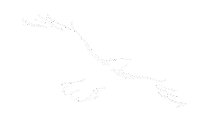
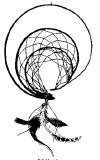
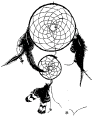
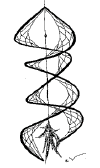


 Get
a course to promote your business online, explode your sales
Get
a course to promote your business online, explode your sales Get
software to promote your business online in less time
Get
software to promote your business online in less time Get
software to streamline your business and run it hands free.
Get
software to streamline your business and run it hands free.
 This
19th-century ink drawing by an unidentified Canadian artist shows Minnesota
Dakota refugees arriving in Canada. Uncheeda (Ohiyesa's grandmother) and
several of his siblings lived in Manitoba, with other Minnesota Dakota
refugees, from 1862 - 74 on the land of his uncle, Mysterious Medicine, who
had a farm in wooded country in Manitoba, Canada.
This
19th-century ink drawing by an unidentified Canadian artist shows Minnesota
Dakota refugees arriving in Canada. Uncheeda (Ohiyesa's grandmother) and
several of his siblings lived in Manitoba, with other Minnesota Dakota
refugees, from 1862 - 74 on the land of his uncle, Mysterious Medicine, who
had a farm in wooded country in Manitoba, Canada.